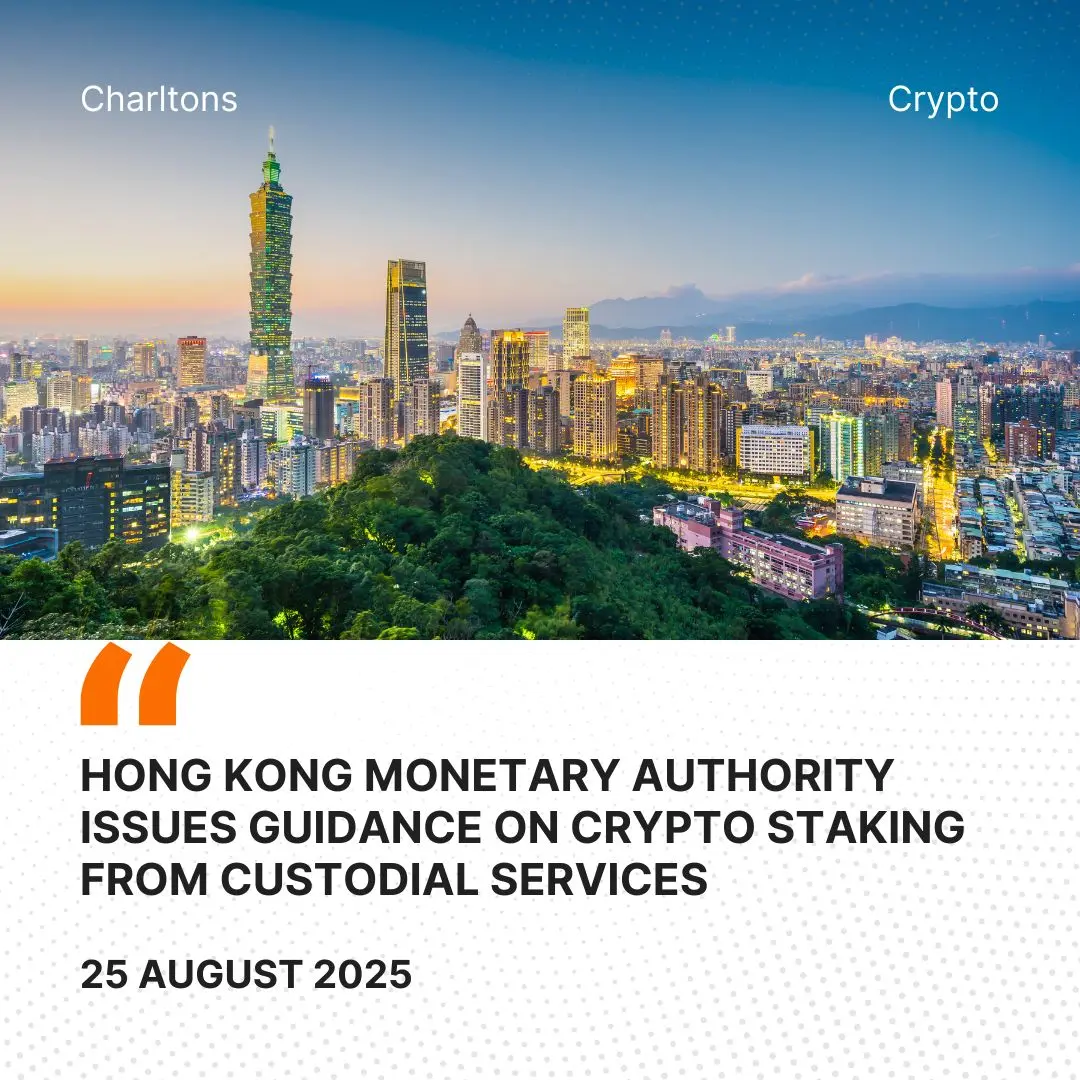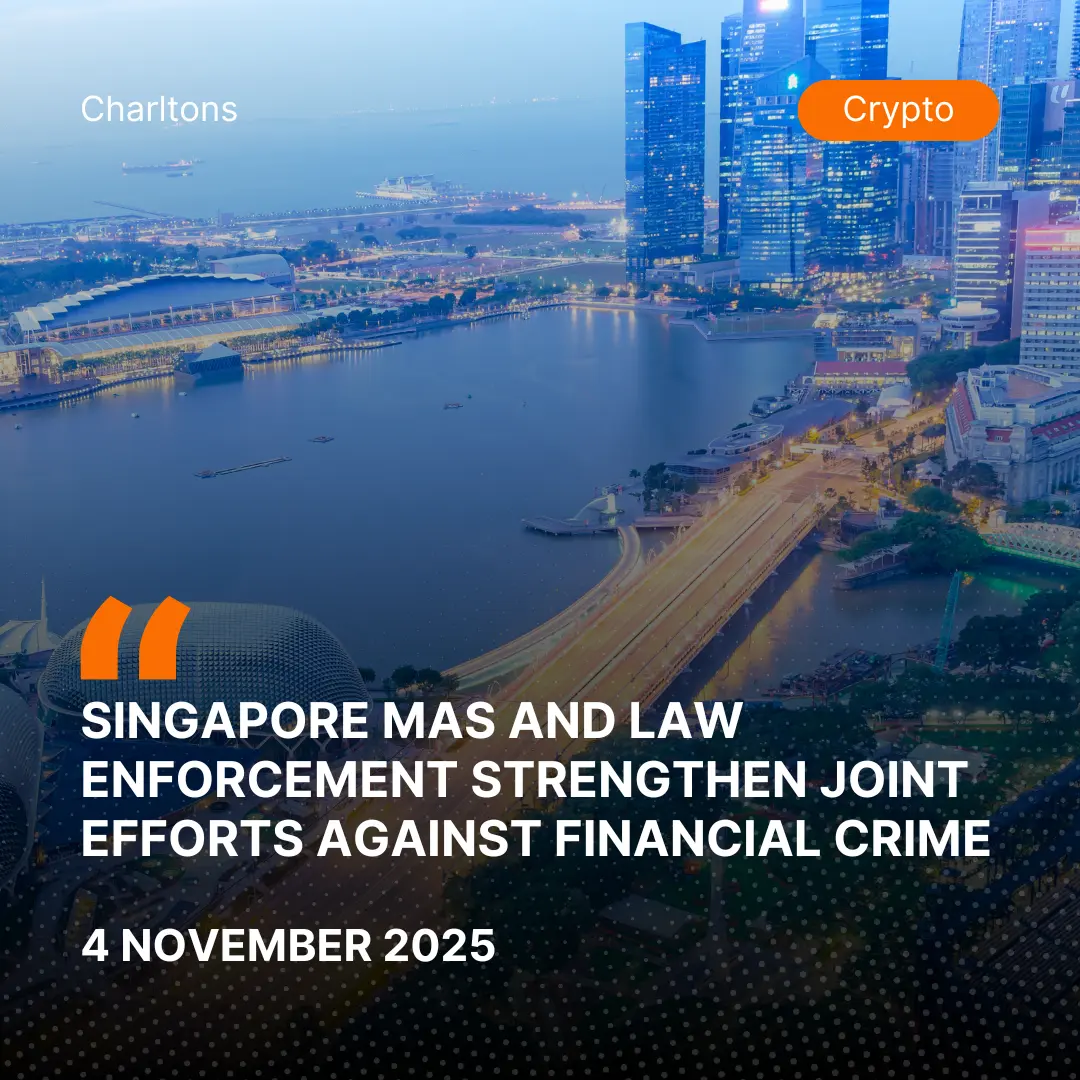
On 7 April 2025, the Hong Kong Monetary Authority (HKMA) released a circular titled “Provision of Staking Services for Virtual Assets from Custodial Services” addressed to all authorised institutions. The circular establishes regulatory standards for authorised institutions that wish to provide crypto staking services as part of their custodial offerings. According to the HKMA, crypto staking refers to committing or locking client virtual assets in a proof-of-stake blockchain protocol to support validation processes, with staking rewards distributed to clients. The guidance clearly states the expected standards that authorised institutions must implement which includes rigorous internal controls, transparent disclosure practices, and strong governance before engaging in crypto/virtual asset staking activities.
Scope of HKMA Guidance on Crypto Staking
The circular applies to authorised institutions and subsidiaries of locally incorporated authorised institutions that provide crypto/virtual asset staking from custodial services. The HKMA clarified that references to “authorised institutions” extend to such subsidiaries. Institutions must ensure their policies, systems, and operational controls comply fully with the HKMA requirements prior to offering staking services. Discussions with the HKMA are expected before launching staking operations.
Internal Controls for Custodial Crypto Staking
Authorised institutions providing crypto staking must:
- Maintain possession or control of withdrawal mechanisms for staked assets, including private keys and voluntary exit messages.
- Safeguard client virtual assets with effective policies preventing errors or misconduct.
- Establish comprehensive operational rules to manage risks, mitigate conflicts of interest, and ensure business continuity.
These controls are intended to reduce operational and custody risks inherent in crypto staking.
Disclosure Standards for Virtual Asset Staking Services
The HKMA requires authorised institutions to disclose:
- The types of virtual assets eligible for staking.
- The involvement of any third-party service providers.
- Fee structures, activation and lock-up periods, payout timelines, unstaking processes, and business resumption arrangements.
- Material risks including slashing, lock-up, validator inactivity, technical bugs, hacking, and legal uncertainty around ownership rights.
The HKMA emphasised that client protection requires clear, upfront disclosures on both staking rewards and potential risks.
Protocol Selection and Oversight of Third-Party Providers
When selecting blockchain protocols for crypto/virtual asset staking, authorised institutions must demonstrate due skill and care. They are expected to perform thorough due diligence, ensuring their infrastructure, technology, and risk controls are fit for purpose. Where outsourcing occurs, authorised institutions must monitor third-party service providers continuously, assessing their validation experience, security measures, and operational resilience.
Implementation and Supervisory Support
Before commencing crypto/virtual asset staking activities, authorised institutions must implement adequate systems and compliance frameworks in accordance with the circular. The HKMA in its circular stated that authorised institutions may also test their staking models within the Supervisory Incubator for Distributed Ledger Technology, launched in January 2025, as part of its supervisory innovation framework.
(Source: https://brdr.hkma.gov.hk/eng/doc-ldg/docId/getPdf/20250407-1-EN/20250407-1-EN.pdf)





